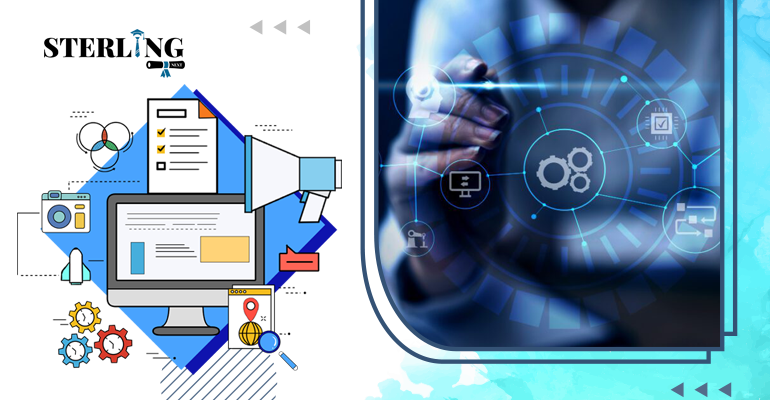- Call us now for any inquiry +1 832-957-9577
- Mail us for any query : [email protected]
Project Management Information System (PMIS)
Training Outcomes Within Your Budget!
We ensure quality, budget-alignment, and timely delivery by our expert instructors.
Table of Content
- Project Management Information System Explained Simply
- What Is A Project Management Information System (PMIS)?
- Why Do Teams Use A PMIS?
- Features You will Find In A Project Management Information System (PMIS)
- Benefits Of Using A Project Management Information System (PMIS)
- Who Can Use A PMIS?
- Examples Of Common PMIS Software
- Project Planning Tools In PMIS
- Staying On Track With Project Scheduling
- Conclusion
Recent Blogs
CISA Certification Cost Insights Exam, Training and Beyond
July 18th, 2025
Clear and Concise Approach to Mastering PRINCE2 Foundation
July 18th, 2025
Final Year Computer Science Project Ideas for Every Skill
July 18th, 2025
Cyber Security Projects That Build Strong Career Skills
July 18th, 2025
Know the Difference Between Projects and Programs
July 18th, 2025
Building a Strong Career Foundation with CompTIA Project+ certification Training
July 18th, 2025
PgMP vs PMP Certification Benefits and Career Insights
July 18th, 2025
Build Stunning HTML and CSS Projects for Your Portfolio
July 18th, 2025
PMI SP Certification for Smarter Project Timeline Roles
July 18th, 2025
CISSP Certification Benefits That Support Career Growth
July 18th, 2025

When working on any project, whether it's a construction job, a software launch, or organizing a large event, there’s always one thing in common, lots of planning, tracking, and communication. This is where a Project Management Information System (PMIS) comes into the picture. In very simple terms, a PMIS is a system that helps people manage projects better by keeping all the important information in one place.
Get Certified With Industry Level Projects & Fast Track Your Career
Checkout Top 10 Highest Paying Jobs
Project Management Information System Explained Simply
When working on any project, whether it's a construction job, a software launch, or organizing a large event, there’s always one thing in common, lots of planning, tracking, and communication. This is where a Project Management Information System (PMIS) comes into the picture. In very simple terms, a PMIS is a system that helps people manage projects better by keeping all the important information in one place.
So, if you’ve ever wondered how big projects stay on track, how teams coordinate from different locations, or how budgets are managed smoothly, the answer usually lies in using a Project Management Information System (PMIS). Let's explore what this system is all about, how it helps, and why more businesses today rely on it to make their projects successful.
What Is A Project Management Information System (PMIS)?
A Project Management Information System (PMIS) is a set of tools, usually in the form of software, that helps project teams organize, plan, and manage their work. Think of it as a digital helper that tracks progress, stores documents, schedules tasks, and gives updates about everything related to a project.
Instead of using emails, spreadsheets, or scattered files, a PMIS puts all these elements together in one central platform. This way, everyone involved in the project, from managers to team members, can stay informed, collaborate easily, and avoid confusion.
Why Do Teams Use A PMIS?
Projects can get messy. There are deadlines, resources, costs, and many people involved. If things are not organized, delays and mistakes can happen. A Project Management Information System (PMIS) helps teams keep everything structured and clear.
Here’s how it makes a difference:
- Keeps track of project goals, tasks, and deadlines
- Helps with project scheduling and resource assignments
- Allows better budgeting and cost control
- Stores documents and important project files
- Gives regular updates and reports
- Improves communication across the team
Features You will Find In A Project Management Information System (PMIS)
A PMIS comes with a variety of features designed to support project management from start to finish. While every software might be a little different, most of them include:
1. Planning and Scheduling
Using project planning tools, teams can lay out all the steps needed to complete a project. This includes creating timelines, assigning tasks, and setting deadlines. The Project Management Information System (PMIS) keeps everything organized so teams know what needs to be done and when.
2. Task Management
Tasks can be created, assigned, updated, and tracked within the system. Team members can mark tasks as complete or raise issues, making it easy for managers to follow up and keep things moving.
3. Communication Tools
Communication is key. A PMIS software usually includes messaging, comment threads, or even video call options to help team members stay connected. This makes it easier to share updates, ask questions, or solve issues together.
4. Resource Management
Managing people and materials is an important part of project success. With resource management tools inside the Project Management Information System (PMIS), managers can see who is working on what, whether resources are being overused or underused, and how to adjust plans to fit available manpower or supplies.
5. Budgeting and Cost Control
Keeping a close eye on finances is essential. The Project Management Information System (PMIS) can help track spending, compare it with the budget, and alert managers if costs are going too high. This makes budgeting and cost control much easier.
6. Reporting and Dashboards
A good PMIS software provides visual dashboards and reports that show how the project is doing. Whether it’s progress updates, missed deadlines, or upcoming tasks, everything is displayed in a clear and simple way.
Benefits Of Using A Project Management Information System (PMIS)
Here’s why so many teams prefer using a Project Management Information System (PMIS):
- Better organization: All project details are stored in one place.
- Clear communication: Everyone is on the same page.
- Time savings: Less time is spent searching for files or following up.
- Smarter decisions: With accurate data and reports, it’s easier to make informed choices.
- Stronger collaboration: Teams can work better together, even if they’re in different locations.
Who Can Use A PMIS?
The beauty of a Project Management Information System (PMIS) is that it can be used by anyone who’s working on a project. It’s helpful for:
- Project Managers
- Team Leads
- Team Members
- Finance and Budget Officers
- HR and Resource Managers
Whether you’re working in IT, construction, education, events, or marketing, a PMIS can be a game-changer.
Examples Of Common PMIS Software
There are many tools available today that fall under the PMIS software category. Some popular ones include:
- Microsoft Project
- Trello
- Asana
- Monday.com
- Jira
- Wrike
Each of these platforms helps manage different parts of a project, and many offer free trials or low-cost options for small teams.
Project Planning Tools In PMIS
A big part of project success is in the planning. Project planning tools in a PMIS help managers break the project into phases, set realistic timelines, and ensure that everyone knows what’s expected. Gantt charts, calendars, and milestone tracking are commonly used features.
How PMIS Supports Resource Management
Managing both human and material resources well is crucial. A Project Management Information System (PMIS) helps with:
- Knowing who is available to take on tasks
- Making sure team members aren’t overloaded
- Allocating tools or equipment as needed
With resource management features, projects are more balanced and efficient.
Staying On Track With Project Scheduling
Deadlines matter. With project scheduling features, teams can avoid missing key dates. A PMIS allows scheduling tasks, setting dependencies, and adjusting timelines when delays occur.
Managing Budgets With Ease
One major advantage of using a Project Management Information System (PMIS) is that it helps keep costs in control. With budgeting and cost control tools, project managers can:
- Set budgets for each part of the project
- Track actual spending
- Get alerts when nearing limits
This helps avoid surprises and keeps the project financially healthy.
Conclusion
In simple terms, a Project Management Information System (PMIS) is like the command center for any project. It gives everyone the tools they need to stay organized, informed, and on track. Whether you’re handling a small team or a huge project, a PMIS makes things easier and smoother.
From planning and resource management to budgeting and cost control, this system covers everything. So if you’re looking for a smarter way to manage your next project, consider using a good PMIS software. It might just be the difference between success and stress.
Frequently Asked Questions
A PMIS is a system or software that helps teams manage all aspects of a project in one place, including planning, tasks, communication, budgeting, and reporting.
It helps you stay organized, track progress, manage resources, and avoid delays or cost overruns.
No. A PMIS can be helpful for small teams and projects too. It’s flexible and can be scaled based on your needs.
It shows who is working on what, prevents overloading, and helps assign work fairly across the team.
Yes, it helps track spending and compare it against your budget so you can avoid overspending.
Tools like Asana, Trello, Microsoft Project, and Monday.com are all examples of popular PMIS software.
Most tools are user-friendly, but some training may help teams use all the features effectively.
Many offer free versions or trial periods. Costs vary depending on features and team size.
It includes built-in tools for communication, task sharing, and real-time updates so everyone stays connected and on the same page.
SterlingNext provides guidance, setup, and support for businesses looking to implement a Project Management Information System (PMIS) that aligns with their needs and goals.
World-class training and development programs developed by top teachers
Whats Included
- World-class training teacher
- Bench has zero learning curve
- We handle the rest.







 Sachin Kumar
Sachin Kumar 
